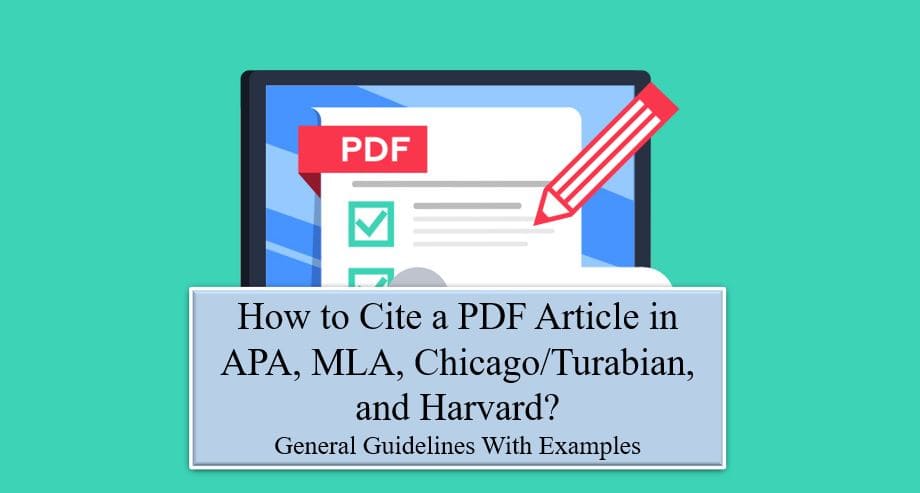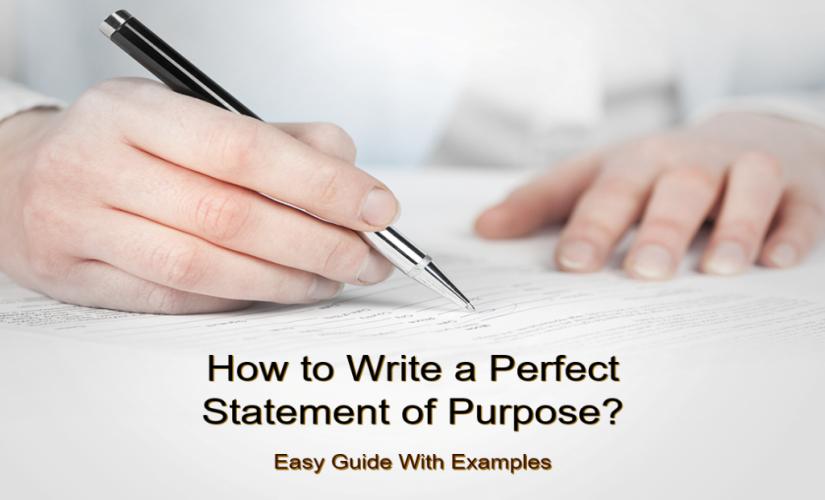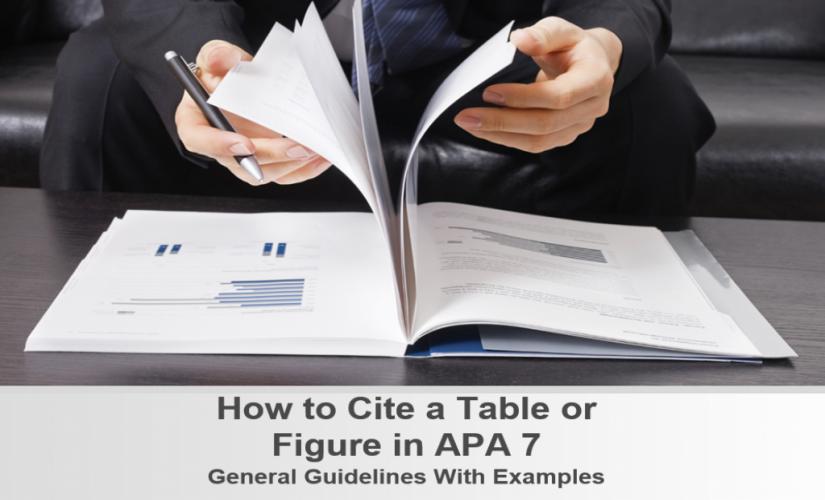Portable Document Format (PDF) is a format that scholars and researchers use when publishing their works. Basically, if students use these texts as sources of evidence in their writing assignments, they must cite them as per the rules of the applicable format. In essence, the rules on how to cite a PDF article are different for APA, MLA, Chicago/Turabian, and Harvard papers. In this case, the difference is not only in citation features but also in their arrangements. In all of the four formats, essential citation elements are the author’s name, the year of publication, the PDF article’s title, the journal’s title (including its volume and issue numbers), and the PDF article’s page range, including links to these files or DOI numbers.
General Guidelines of Citing a PDF Article in APA, MLA, Chicago/Turabian, and Harvard
Students and researchers use different strategies to find evidence to back up their claims and arguments when writing an academic text, such as a research paper, an essay, a Master’s thesis, or a dissertation. Basically, one of these strategies is finding scholarly articles in PDF format published on online platforms, including websites and databases. Also, the most readily available texts on these platforms are PDF (Portable Document Format) articles, which can be scholarly or not. Hence, students need to learn how to cite a PDF article in different writing formats, such as APA, MLA, Chicago/Turabian, or Harvard styles.
When, Where, and How to Use
To ensure their writing passes the test of credibility as academic texts, students and researchers prefer to use scholarly, peer-reviewed journal articles in PDF format. Sometimes, writers have to provide an attachment of sources that they have used to gather information to strengthen their claims and arguments. In this case, using PDFs helps accomplish this goal. On where to use, students and researchers must determine the purpose of their writing. As indicated, when writing an academic text, a writer should use scholarly journal articles published in PDF format. On how to use, a student or researcher only needs to take information from a PDF article and cite it as a direct quote or paraphrase it. In turn, academic writing standards require writers to cite such sources according to rules of the applicable format.
How to Cite a PDF Article in APA 7
When citing a PDF article as a source in APA 7, a student should use both in-text and reference citations. Firstly, APA in-text citations appear in the main text as a parenthesis, while reference entries must be on the reference list. Basically, reference citations capture the author’s name (last name, first and middle name’s initials), the publication year, the title of the PDF article, the title of the journal, journal’s volume and issue numbers, the page range, and the link where it is taken or DOI number. In contrast, in-text citations capture the author’s last name and the year of publication. Also, the PDF article’s title must in a sentence case. In turn, if the PDF article has more than twenty, the citation should use an ellipsis (…) after the first nineteen authors and before the last author. Besides, the ellipsis covers for many authors of the text not indicated in the citation entry.
Example of a reference citation for a PDF article in APA 7:
- Britto, P. R., Lye, S. J., Proulx, K., Yousafzai, A. K., Matthews, S. G., Vaivada, T., Perez-Escamilia, R., Rao, N., Ip, P., Fernald, L. C. H., MacMillan, H., Hanson, M., Wachs, T.D., Yao, H., Yoshikawa, H., Cerezo, A., Leckman, J. F., & Bhutta, Z. A. (2017). Nurturing care: Promoting early childhood development. The Lancet, 389(10064), 91–102. https://doi.org/10.1016/s0140-6736(16)31390-3
Or
- Britto, P. R., Lye, S. J., Proulx, K., Yousafzai, A. K., Matthews, S. G., Vaivada, T., Perez-Escamilia, R., Rao, N., Ip, P., Fernald, L. C. H., MacMillan, H., Hanson, M., Wachs, T.D., Yao, H., Yoshikawa, H., Cerezo, A., Leckman, J. F., & Bhutta, Z. A. (2017). Nurturing care: promoting early childhood development. The Lancet, 389(10064), 91–102. Retrieved from https://eprints.soton.ac.uk/404125/1/Nurturing%2520care%2520submitted.pdf
Example of an APA in-text citation of the same PDF article:
- Evidence suggests that children’s early age shapes their cognitive development (Britto et al., 2017).
Or
- Brittol et al. (2017) suggest that…
Note: In APA 7, students use the phrase “et al.” for more than three authors when organizing in-text citations.
How to Cite a PDF Article in MLA 9
If students use a PDF article as a source in MLA 9, they should cite it in the main text as an in-text citation and at the end of the document on a separate page as a Works Cited. In this case, Works Cited citations capture the author’s name (last name, first and middle name), the article’s title, the journal’s title, the journal’s volume and issue number, the publication year, the page range, and the link or DOI number. Moreover, in-text citations capture the author’s last name and a page number. In turn, the PDF article’s title must be in a title case enclosed within double quotation marks. Also, if the PDF article has more than three authors, MLA citations should indicate the author that appears first with words “et al.” to cover the rest of the authors.
Example of a Works Cited Citation for a PDF Article in MLA 9:
- Black, Maureen M., et al. “Early Childhood Development Coming of Age: Science Through the Life Course.” The Lancet, vol. 389, no. 10064, 2017, pp. 77-90, doi: 10.1016/S0140-6736(16)31389-7.
Or
- Black, Maureen M., et al. “Early Childhood Development Coming of Age: Science Through the Life Course.” The Lancet, vol. 389, no. 10064, 2017, pp. 77-90, www.ncbi.nlm.nih.gov/pmc/articles/PMC5884058/pdf/nihms952170.pdf. Accessed 4 May 2020.
Example of an in-text citation of the same PDF article in MLA 9:
- Evidence suggests that children’s early age shapes their cognitive development (Black et al. 78).
Or
- Black et al. hold the view that parents should engage their children in plays to develop their motor skills (78).
How to Cite a PDF Article in Chicago/Turabian
When a student uses a PDF article as a source document in Chicago/Turabian, they should cite it in the main text as an in-text citation and a footnote and at the end of the document on a separate page as a Bibliography. For example, bibliography entries capture the author’s name (last name, first and middle name), the PDF article’s title, the journal’s title, the journal’s volume, and issue numbers, the year of publication, the page range, and the link or DOI number. To a greater extent, bibliography entries of a journal PDF article are almost similar to Works Cited entries of the same document in the MLA sample paper. For footnotes, entries should be at the bottom of the page where citations are made. Also, it should capture the same information as bibliography entries with slight changes in the arrangement of citation elements.
Example of a bibliography citation for a PDF article in Chicago/Turabian:
- Duncan, Greg J., Jeanne Brooks‐Gunn, and Pamela Kato Klebanov. “Economic Deprivation and Early Childhood Development.” Child Development 65, no. 2 (1994): 296-318. Accessed June 4, 2020. doi: 10.2307/1131385.
Or
- Duncan, Greg J., Jeanne Brooks‐Gunn, and Pamela Kato Klebanov. “Economic Deprivation and Early Childhood Development.” Child Development 65, no. 2 (1994): 296-318. Accessed June 4, 2020. https://www.jstor.org/stable/1131385.
Example of an in-text citation of the same PDF document in Chicago/Turabian:
- The development of children causes a huge influence on the economic suitability of a country.1
Example of a footnote citation of the same PDF document in Chicago/Turabian:
- 1. Greg J. Duncan, Jeanne Brooks‐Gunn, and Pamela Kato Klebanov, “Economic Deprivation and Early Childhood Development,” Child Development 65, no. 2 (1994): 298, accessed June 4, 2020. doi: 10.2307/1131385.
Or
- Greg J. Duncan, Jeanne Brooks‐Gunn, and Pamela Kato Klebanov, “Economic Deprivation and Early Childhood Development,” Child Development 65, no. 2 (1994): 298, accessed June 4, 2020. https://www.jstor.org/stable/1131385.
How to Cite a PDF Article in Harvard
If students cite a PDF article as a source document, they should use two types of citations: an in-text citation and a reference list citation in Harvard. Basically, reference list citations should capture the author’s name (last name, initials of the first and middle name), the year of publication, the PDF article’s title, the journal’s title, the journal’s volume and issue numbers, the page range, and the link or DOI number. To some extent, Harvard reference list citations and in-text citations resemble APA references and in-text citations. Regarding in-text citations, students should capture the author’s last name and publication year.
Example of a reference list citation for a PDF article in Harvard:
- Richter, LM, Daelmans, B, Lombardi, J, Heymann, J, Boo, FL, Behrman, JR, Lu, C, Lucas, JE, Perez-Escamilla, R, Dua, T & Bhutta, ZA 2017, ‘Investing in the foundation of sustainable development: Pathways to scale up for early childhood development,’ The Lancet, vol. 389, no. 10064, pp. 103-118, viewed 12 July 2020, DOI: 10.1016/S0140-6736(16)31698-1.
Or
- Richter, LM, Daelmans, B, Lombardi, J, Heymann, J, Boo, FL, Behrman, JR, Lu, C, Lucas, JE, Perez-Escamilla, R, Dua, T & Bhutta, ZA 2017, ‘Investing in the foundation of sustainable development: Pathways to scale up for early childhood development,’ The Lancet, vol. 389, no. 10064, pp. 103-118, viewed 12 July 2020, <https://www.ncbi.nlm.nih.gov/pmc/articles/PMC5880532/pdf/nihms952169.pdf>.
Example of an in-text citation for the same PDF document in Harvard:
- The early years of growth are foundational to a child’s physical, mental, and emotional wellbeing across the life continuum (Richter et al. 2017).
Or
- Richter et al. (2017) hold that the early years of growth are foundational to a child’s physical, mental, and emotional wellbeing across the life continuum.
Note: In Harvard, scholars use the phrase “et al.” for more than three authors in in-text citations.
Citation Format of a Single PDF Article in APA, MLA, Chicago/Turabian, and Harvard
As indicated in the preceding section, citation rules are different across four main paper formats. Basically, if a writer uses the same PDF article to write papers in each of the formats, citation entries would be different. Assuming a student uses the PDF article “Nurses’ Concerns About Using Information Systems: Analysis of Comments on a Computerized Nursing Care Plan System in Taiwan,” published by Ting-Ting Lee in the Journal of Clinical Nursing in 2004, citation entries across four formats would appear as below:
1. APA Reference and In-Text Citation Formats:
Reference:
- Lee, T. T. (2005). Nurses’ concerns about using information systems: Analysis of comments on a computerized nursing care plan system in Taiwan. Journal of Clinical Nursing, 14(3), 344-353. Retrieved from https://www.nottingham.ac.uk/~ntzcl1/literature/barriers/lee.pdf
In-Text Citation Samples for APA 7:
- Evidence indicates… (Lee, 2005).
- According to Lee (2015), there is…
2. MLA Works Cited and In-Text Citation Formats:
Works Cited entry:
- Lee, Ting‐Ting. “Nurses’ Concerns About Using Information Systems: Analysis of Comments on a Computerized Nursing Care Plan System in Taiwan.” Journal of Clinical Nursing, vol. 14, no. 3, 2005, 344-353, www.nottingham.ac.uk/~ntzcl1/literature/barriers/lee.pdf.
In-Text Citation Samples for MLA 9:
- Evidence shows that… (Lee 344).
- Lee states that… (344).
3. Chicago/Turabian bibliography and In-Text Citation/Footnote Formats:
Bibliography:
- Lee, Ting‐Ting. “Nurses’ Concerns About Using Information Systems: Analysis of Comments on a Computerized Nursing Care Plan System in Taiwan.” Journal of Clinical Nursing 14, no. 3 (2005): 344-353. Accessed August 12, 2020. https://www.nottingham.ac.uk/~ntzcl1/literature/barriers/lee.pdf.
Chicago/Turabian In-Text Citation Sample:
- In Taiwan, a care plan system helps nurses to provide quality services to their patients.1
Chicago/Turabian Footnote Sample:
- 1. Ting‐Ting Lee, “Nurses’ Concerns About Using Information Systems: Analysis of Comments on a Computerized Nursing Care Plan System in Taiwan,” Journal of Clinical Nursing 14, no. 3 (2005): 344, accessed August 12, 2020. https://www.nottingham.ac.uk/~ntzcl1/literature/barriers/lee.pdf.
4. Harvard Reference List and In-Text Citation Format:
Reference List Entry:
- Lee, TT 2005, ‘Nurses’ concerns about using information systems: Analysis of comments on a computerized nursing care plan system in Taiwan,’ Journal of Clinical Nursing, vol. 14, no. 3, pp. 344-353, viewed 24 June 2020, <https://www.nottingham.ac.uk/~ntzcl1/literature/barriers/lee.pdf>.
Harvard In-Text Citation Samples:
- Evidence indicates that… (Lee 2005).
- Lee (2005) argues that…
Citing a PDF Journal Article With No Date
Despite the rules of academic writing that require students to capture full information when citing sources, sometimes, they cannot find some information. As indicated in the preceding sections, citation elements include the author’s full names, the year of publication, the PDF article’s title, the journal’s title, the journal’s volume and issue numbers, the page range, and the link or DOI number. Basically, this information reflects a scholarly, peer-reviewed journal article in PDF format. However, sometimes, writers may come across a PDF article without one or several elements. As a result, their citations would not be complete, as per the rules of how to cite a PDF article. Assuming the PDF article above (“Nurses’ Concerns About Using Information Systems: Analysis of Comments on a Computerized Nursing Care Plan System in Taiwan”) has no publication date, citations would read as follows:
1. APA Reference and In-Text Citation With No Date:
APA Reference With No Date:
- Lee, T. T. (n.d.). Nurses’ concerns about using information systems: Analysis of comments on a computerized nursing care plan system in Taiwan. Journal of Clinical Nursing, 14(3), 344-353. Retrieved from https://www.nottingham.ac.uk/~ntzcl1/literature/barriers/lee.pdf
APA In-Text Citations With No Date:
- Evidence indicates… (Lee, n.d.).
- According to Lee (n.d.), there is…
2. MLA Works Cited and In-Text Citation With No Date:
MLA Works Cited With No Date:
Lee, Ting‐Ting. “Nurses’ Concerns About Using Information Systems: Analysis of Comments on a Computerized Nursing Care Plan System in Taiwan.” Journal of Clinical Nursing, vol. 14, no. 3, n.d., 344-353, www.nottingham.ac.uk/~ntzcl1/literature/barriers/lee.pdf.
Note: In-text citations in MLA 9 do not require dates. In turn, writers use page numbers when citing a PDF article.
3. Chicago/Turabian Bibliography and In-Text Citation/Footnote With No Date:
Bibliography Entry With No Date:
- Lee, Ting‐Ting. “Nurses’ Concerns About Using Information Systems: Analysis of Comments on a Computerized Nursing Care Plan System in Taiwan.” Journal of Clinical Nursing 14, no. 3 (n.d.): 344-353. Accessed August 12, 2020. https://www.nottingham.ac.uk/~ntzcl1/literature/barriers/lee.pdf.
Chicago/Turabian Footnote With No Date:
- Ting‐Ting Lee, “Nurses’ Concerns About Using Information Systems: Analysis of Comments on a Computerized Nursing Care Plan System in Taiwan,” Journal of Clinical Nursing 14, no. 3 (n.d.): 344, accessed August 12, 2020. https://www.nottingham.ac.uk/~ntzcl1/literature/barriers/lee.pdf.
4. Harvard Reference List and In-Text Citation With No Date:
Harvard Reference With No Date:
- Lee, TT n.d., ‘Nurses’ concerns about using information systems: Analysis of comments on a computerized nursing care plan system in Taiwan,’ Journal of Clinical Nursing, vol. 14, no. 3, pp. 344-353, viewed 24 June 2020, <https://www.nottingham.ac.uk/~ntzcl1/literature/barriers/lee.pdf>.
Harvard In-Text Citations With No Date:
- Evidence indicates that… (Lee n.d.).
- Lee (n.d.) argues that…
Finding Perfect Scholarly Journal PDF Articles
Sources that lack some citation elements, such as publication date, undermine the credibility of an academic text. Basically, this aspect explains why instructors insist on students using scholarly, peer-reviewed journal PDF articles that undergo academic scrutiny before publication. To find such PDF articles, a writer should visit online databases, such as PubMed, ScienceDirect, JSTOR, and Scopus. In turn, Google Scholar is also useful in finding such PDF articles.
Summing Up on How To Cite a PDF Article in APA, MLA, Chicago/Turabian, and Harvard Formats
Scholars and researchers publish their works in different formats, including PDFs. When students use such a PDF article, they should cite this type of source by following the rules of the applicable format. In short, citing a PDF article in APA, MLA, Chicago/Turabian, and Harvard requires students to follow citation rules of each format. Hence, the following tips are essential when citing PDF articles:
- Find author’s names and use the last name followed by initials of the first and middle names in both APA and Harvard. In MLA and Chicago/Turabian, first and middle names should be in full.
- Cover the year of publication.
- Consider the journal’s title, including volume and issue numbers.
- Note the article’s page range.
- Include the link to the PDF article or DOI number.



